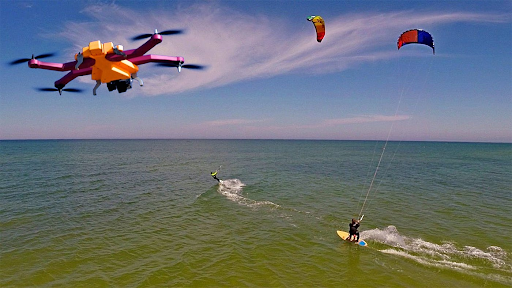Sports photography is a thrilling blend of passion, skills, and timing. Imagine freezing a monumental goal, an epic jump, or the intense expressions of athletes in the midst of their game. But behind each captivating image is a story, a perspective, and sometimes, an unforeseen twist.
Table of Contents
The Art and Science Behind the Lens
Sports photography isn’t just about clicking a button; it’s an art. It combines knowledge of the sport, understanding of photography techniques, and the ability to anticipate action.
The Role of Betting Platforms in Understanding Sports
While traditional media offers an overview of games, dedicated sports platforms dive deeper. One such platform, BetWinner – https://betwinner.pk/, provides insights into the latest sports matches, highlighting significant moments which, to a sports photographer, can serve as a treasure trove of knowledge. They not only update on scores but also discuss game-changing moments, players’ forms, and predictions. When a photographer understands the game’s essence, the odds of capturing those iconic moments skyrocket.
Essential Equipment for the Perfect Shot
For stunning sports photographs, certain gear is essential:
- Camera: A DSLR or mirrorless camera with high shutter speed and continuous shooting mode.
- Lenses: Depending on the sport, a mix of wide-angle, telephoto, and prime lenses might be necessary.
- Tripod: Especially for static shots or when using heavy lenses.
- Camera Bag: To protect and transport gear efficiently.
Tips and Tricks for Aspiring Sports Photographers
- Anticipate the Action: Familiarize yourself with the game’s rules and patterns. This knowledge helps anticipate where the action might happen next.
- Positioning is Key: Find the best vantage point. Whether it’s at the side-lines, behind the goals, or even elevated platforms, your position can make or break the shot.
- Use the Right Settings: High shutter speed to freeze the action, wider apertures for more light, and ISO settings adjusted to the environment.
- Continuous Shooting Mode: This mode allows capturing several photos in a fraction of a second, ensuring you don’t miss that perfect moment.
How to Find Unique Angles and Perspectives
Traditional corporate headshots are classic, but adding creativity can make your images stand out. Get low to the ground, find silhouettes, use reflections, or even experiment with black and white for dramatic effects.

The Ethical Side of Sports Photography
While the thrill of getting the perfect shot is undeniable, it’s essential to respect players’ privacy and boundaries. Avoid interrupting the game, stay out of restricted areas, and always ask for permission when necessary.
The Influence of Technology on Sports Photography
As with many industries, technology has dramatically influenced the realm of sports photography. In the past, photographers would often miss split-second moments due to the limitations of their equipment. Today, advancements have paved the way for capturing moments previously thought impossible.
Drones in Sports Photography
Drones have emerged as a revolutionary tool. These flying devices offer:
- Bird’s Eye View: Capture vast stretches of the field or track, providing a unique perspective on formations and movements.
- Tracking Features: Modern drones can lock onto and follow athletes, ensuring dynamic yet stable footage.
- Flexibility: Drones can get shots that might be difficult or impossible for human photographers, such as those from directly above.
Instant Review and Digital Integration
In the age of the internet, there’s a hunger for real-time content. Today’s cameras, combined with wireless technology, allow:
- Immediate Uploads: Images can be sent directly to editors or social media within seconds.
- Live Edits: With integrated software, photographers can make quick edits or adjustments on the spot.
- Digital Cataloging: Gone are the days of film. Digital storage solutions make organizing and retrieving photos a breeze.
The Relationship Between Athletes and Photographers
It’s an unspoken bond, the one between athletes at their prime and the photographers who immortalize them.
Building Trust
Gaining the trust of athletes is vital. When an athlete is comfortable, the chances of capturing candid, relaxed moments increase. This relationship is cultivated over time, through mutual respect and understanding.
Telling Their Story
Each athlete has a journey, filled with highs, lows, triumphs, and setbacks. Photographers have the privilege and responsibility of telling this story through images. Capturing not just the pinnacle moments, but also the times of struggle, dedication, and perseverance, paints a holistic picture of the athlete’s journey.

Conclusion
Sports photography is a compelling field where art meets action. Through dedication, understanding, and a bit of luck, capturing those breathtaking moments becomes a rewarding experience. For more insights into sports, this Wikipedia article offers a deeper dive into its intricacies.
FAQ
- What is the best camera for sports photography?
- While there isn’t a ‘one size fits all’, brands like Canon, Nikon, and Sony offer advanced models suitable for sports photography.
- How can I improve my sports photography skills?
- Practice, study the game, and always be ready to capture unexpected moments. Networking with other photographers and attending workshops can also be beneficial.
- Is it essential to understand the sport I’m photographing?
- While not mandatory, understanding the sport can provide insights into significant moments, making your photographs more impactful.
- How do I handle low-light conditions in sports photography?
- Using fast lenses (with wide apertures), increasing ISO settings, and having a steady hand or tripod can help in such situations.

